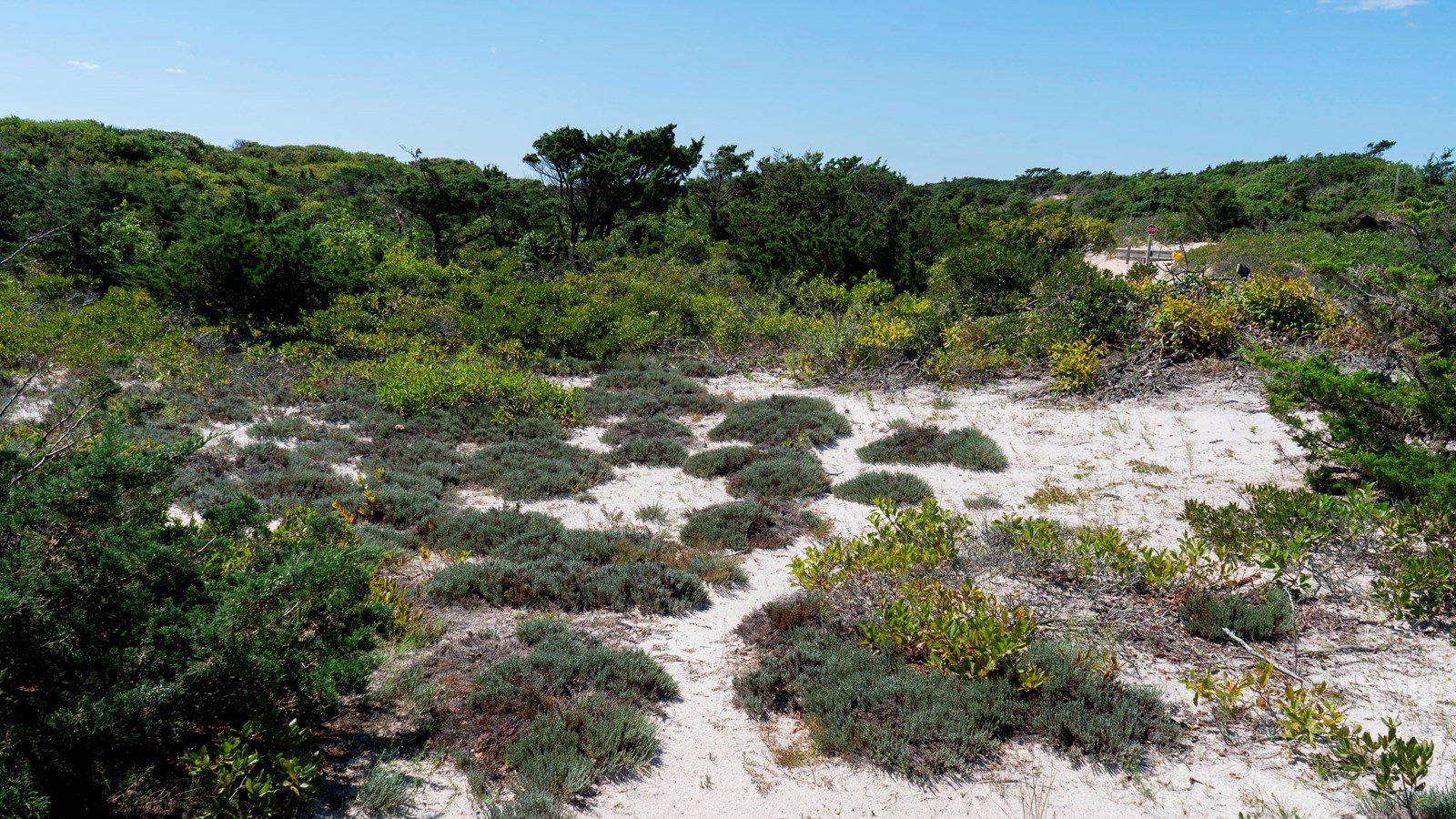Last updated: May 12, 2022
Place
Sailors Haven: Swale

NPS/Sucena
Protected from the ocean by the primary dunes, this ecosystem is home to a wider variety of plant species than the ocean beach. Look around and you’ll notice the stout gray and green patches of Beach Heather, lush bushes of Beach Plum, or even the scrubby form of Pines and Cedars.
The “swale”, as this area is called, is the open space between the primary and secondary dune line. Swale’s on Fire Island host a variety of plant species which are often associated with Long Island’s coastal environments. Many of these plants are not as well adapted to the harsh conditions of the ocean beach as American Beach Grass, but they are still quite hardy. As the American Beach Grass primes the environment by constructing protective dunes and forming soil through decomposition, they are succeeded by the plants we see here.
“Succession” refers to the gradual process of change in an ecosystem brought about as one community of plants is replaced progressively by another. On Fire Island we can travel through time through different stages of succession as we move from the ocean to forest.
Most of the plants which call the swale home are well-adapted to its unique conditions. Swales can be hot spots. Situated between the two dune lines, swales often lack a comfortable breeze. Swales are also sunnier environments, as the white sandy faces of the two dunes refract light into the swale like a sun reflector one might use to tan on the beach. Because of this, swales are arid and desert-like habitats, sometimes even supporting cacti and other desert-like species.
One iconic swale plant is Bayberry. Bayberry bushes have several unique adaptations designed to help them survive in the sunny swale. They are easily identified by the presence of the small whitish berries to which they owe their name. Observe the berries closely and you will see a thin coat of wax which helps the berry to retain moisture. As wax is hydrophobic, water is unable to escape the berry, preventing them from shriveling up in the hot sun. This wax has been used traditionally in the production of special “bayberry candles” often associated with good fortune when burnt on cusp of the new year.
